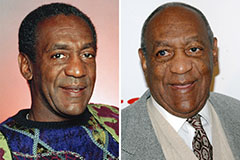The WWF Championship Belts hold a special and fabled area in the record of specialist fumbling. More than mere accessories, these concrete symbols of success represent the peak of accomplishment, the conclusion of blood, sweat, and rips shed within the made even circle. For decades, the view of a wrestler lifting a gleaming WWF (later copyright) champion belt over their head has been an renowned photo, immediately identifiable also to those with only a passing knowledge with the sport. These belts are not simply prizes; they are physical symptoms of stories, heritages, and the ever-evolving landscape of professional wrestling.
The history of WWF Championship Belts is as abundant and dynamic as the firm itself. From the very early days of the World Wide Wrestling Federation (WWWF) and its inaugural championship, the lineage of these titles informs a engaging narrative of wrestling's development and improvement. The original WWWF Championship, held by the famous Pal Rogers, was a reasonably basic design, a far cry from the elaborate and typically customized belts of today. Yet, it laid the structure for a tradition of symbolic equipment that would certainly come to define battling excellence.
As the WWWF transitioned into the WWF under Vince McMahon Sr. and later on his boy, Vince K. McMahon Jr., the championship belts developed in tandem with the company's expanding popularity. The "Big Eagle" belt, associated with the Hulkamania period, came to be an instantly well-known symbol of fumbling's mainstream innovation in the 1980s. Its big, magnificent eagle style, typically draped over the wide shoulders of Hunk Hogan, illustrated the epic characters and growing popularity of the moment. This era cemented the championship belt as a critical storytelling tool, a visual representation of supremacy and the utmost prize that every wrestler aspired to obtain.
The 1990s introduced a new era for the WWF, noted by a change in wrestling style and the emergence of new super stars. This duration also saw the introduction of brand-new WWF Champion Belts, mirroring the transforming aesthetic and the characters holding them. The "Winged Eagle" belt, with its more elaborate style including numerous plates and a famous winged eagle, ended up being the symbol of champs like Bret Hart, Shawn Michaels, and Rock Cold Steve Austin. This style is commonly thought about among one of the most legendary and cherished in battling background, representing a golden era for the firm and its top title.
The Attitude Era, a period of edgier storylines and defiant characters, brought with it even more evolution in the design of the WWF Champion Belts. While the "Winged Eagle" continued to be for a while, the introduction of the " Smoking cigarettes Skull" belt, specifically created for Rock Cold Steve Austin, marked a departure from practice. This special belt, including a head with smoke rising from its eye sockets, highlighted the defiant and anti-establishment personality of one of fumbling's most significant stars. It showed the firm's readiness to customize the champion to fit the character, more enhancing the storytelling capacity of the title.
The turn of the millennium and wwf championship belts the eventual rebranding of the WWF to copyright saw further models of the championship belts. The "Undisputed Championship" period, complying with the procurement of copyright, presented a brand-new design that combined the WWF and copyright Globe Heavyweight Championships. This belt, while at first representing a marriage, eventually gave way to the "Spinner" belt, famously connected with John Cena. This debatable design, featuring a large copyright logo design that could spin, was both admired and slammed for its fancy and unique look. Regardless of viewpoint, it came to be synonymous with Cena's dominant power and the era he defined.
Past the major globe championship, the WWF Championship Belts encompass a range of titles, each standing for a various level of achievement and expertise within the company. The Intercontinental Championship, typically taken into consideration the "workhorse" title, has a long and distinguished history, held by several future world champions. 1 Its numerous styles throughout the years have shown its importance as a stepping rock to the centerpiece. Similarly, the United States Champion ( at first a copyright title brought over after the purchase), the Tag Team Championships (with their countless and usually visually unique layouts representing the unity of a group), the Women's Champions ( advancing through numerous designs mirroring the expanding importance of females's fumbling), and the numerous "hardcore" and "European" titles (though now defunct) all contribute to the rich tapestry of WWF/copyright championship background.
1.
The distinguished history of the Intercontinental Champion: copyright, Aug. 12, 2022.
www.youtube.com.
The style and building and construction of WWF Championship Belts are considerable aspects of their attraction. Often crafted from steel plates ( commonly zinc or brass) and natural leather bands, these belts are substantial symbols of eminence and workmanship. The complex describing on home plates, including business logos, eagles, globes, and other symbolic imagery, adds to their visual appeal and historic importance. The weight and feeling of a champion belt are often described by wrestlers as adding to the feeling of achievement and authenticity connected with holding it.
The legacy of WWF Championship Belts expands much beyond the wrestling ring. They have ended up being cultural symbols, appearing in motion pictures, tv programs, and computer game. Replicas of these belts are extremely searched for by followers, serving as tangible pointers of their preferred wrestlers and unforgettable eras. The image of a champ proudly showing their belt is deeply ingrained in pop culture, standing for success and success in a more comprehensive feeling.
To conclude, the WWF Champion Belts are far more than just attractive devices. They are powerful icons of battling background, standing for the triumphs and tribulations of many professional athletes that have actually strived for greatness within the settled circle. From the basic layouts of the early days to the sophisticated and tailored belts of the modern era, these titles have progressed together with the company, mirroring its transforming landscape and the epic characters that have held them. The tradition of these belts remains to endure, fascinating fans and solidifying their location as renowned icons of expert wrestling quality.
 Jaleel White Then & Now!
Jaleel White Then & Now! Julia Stiles Then & Now!
Julia Stiles Then & Now! Burke Ramsey Then & Now!
Burke Ramsey Then & Now! Jane Carrey Then & Now!
Jane Carrey Then & Now! Bill Cosby Then & Now!
Bill Cosby Then & Now!